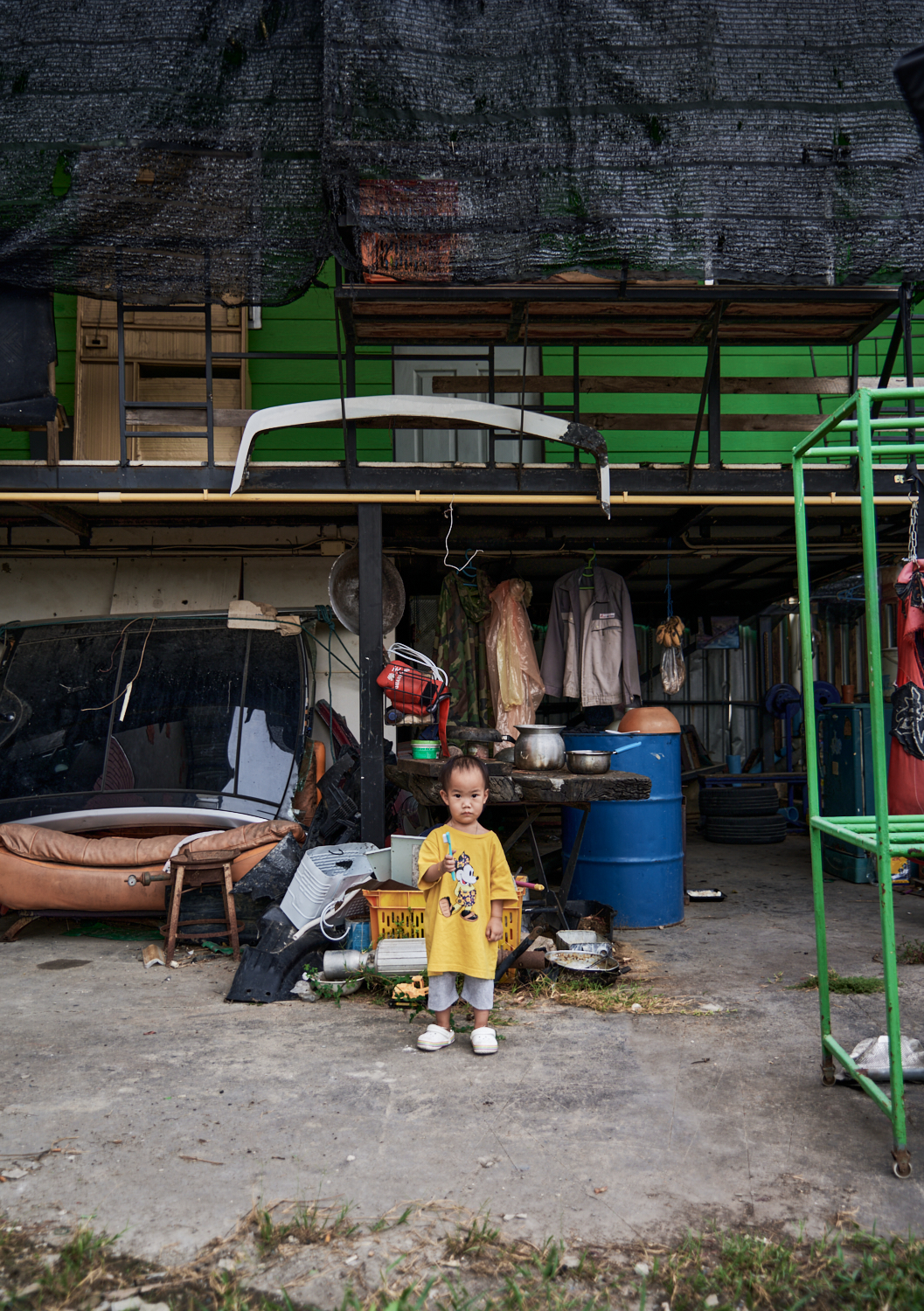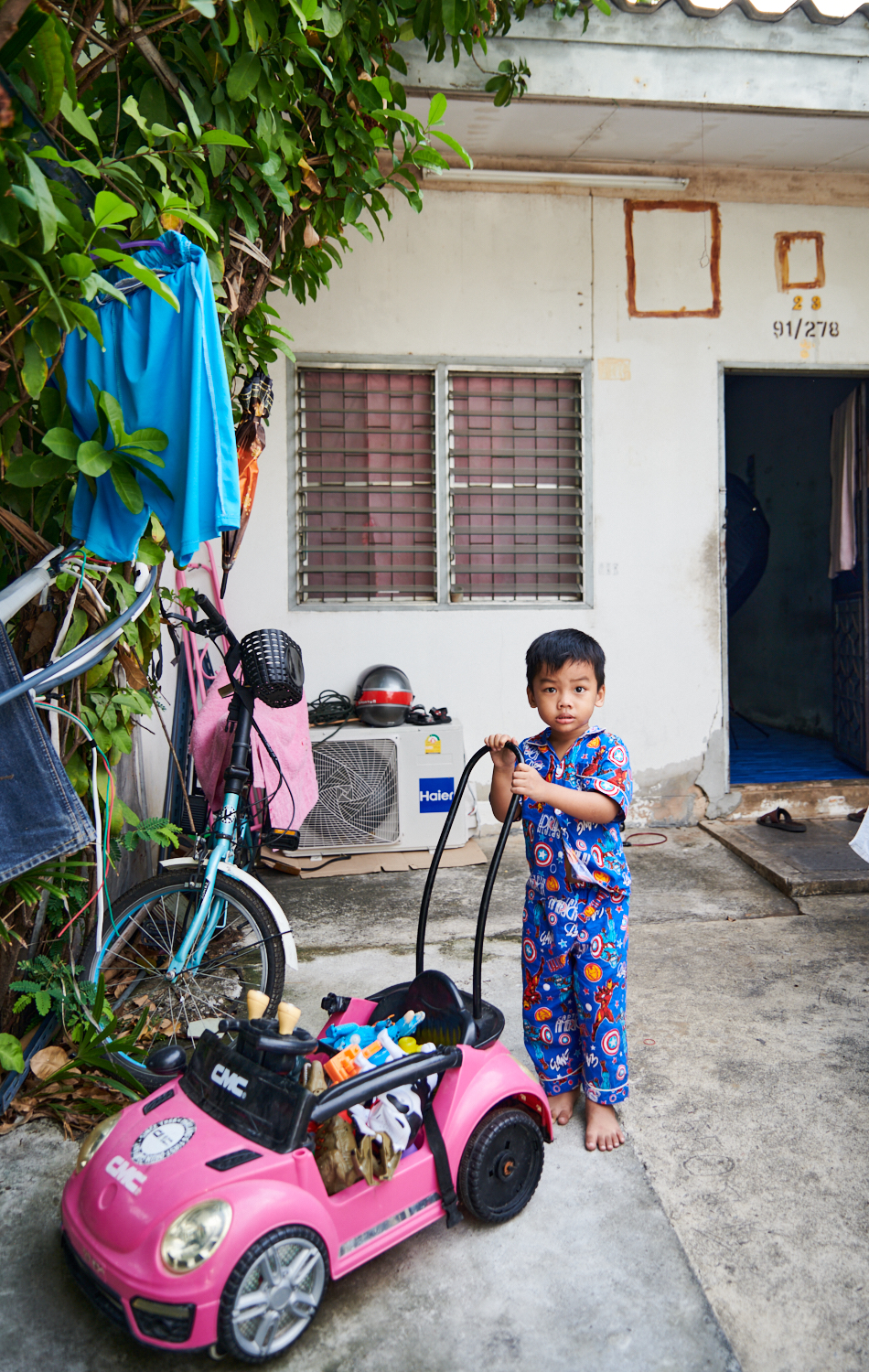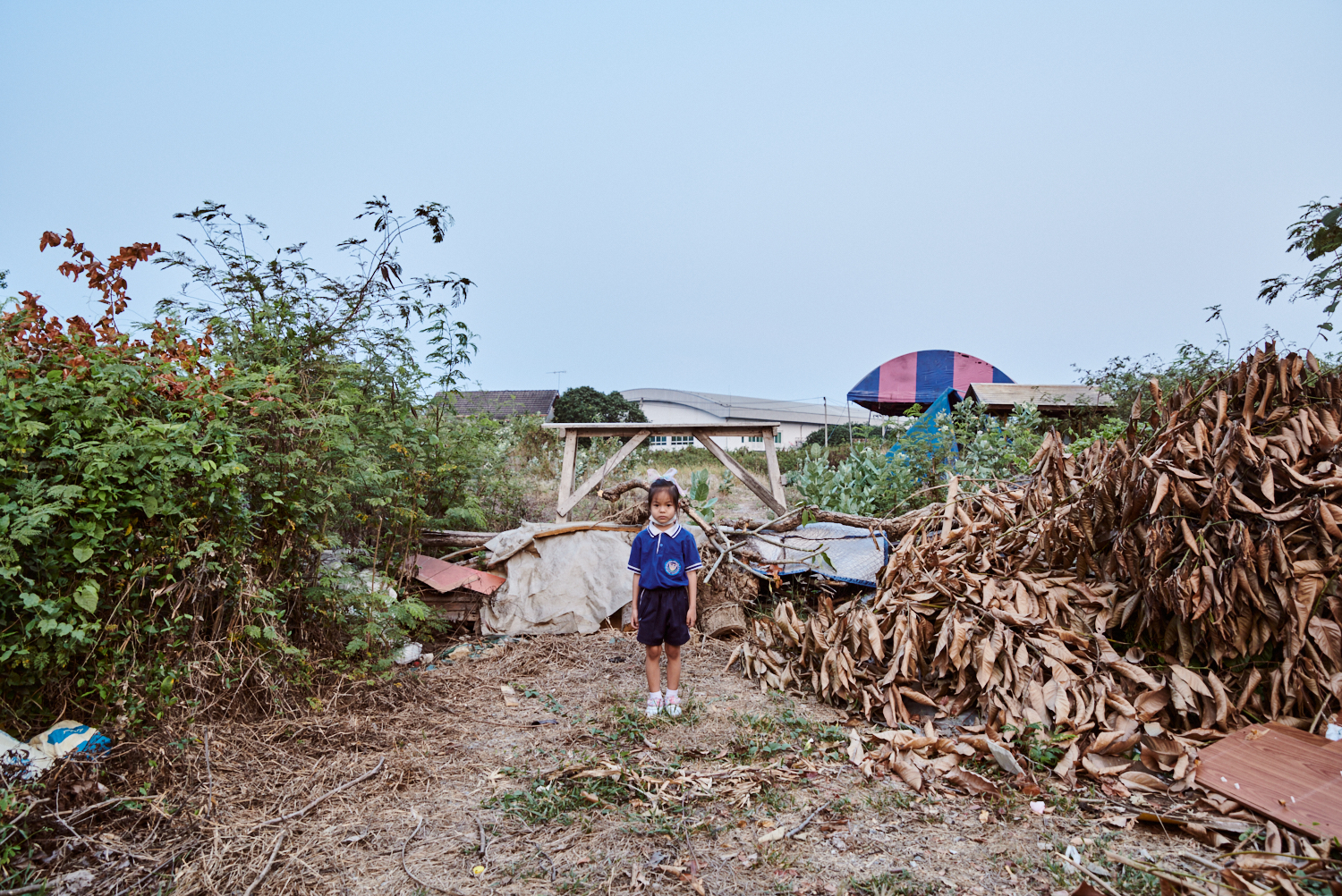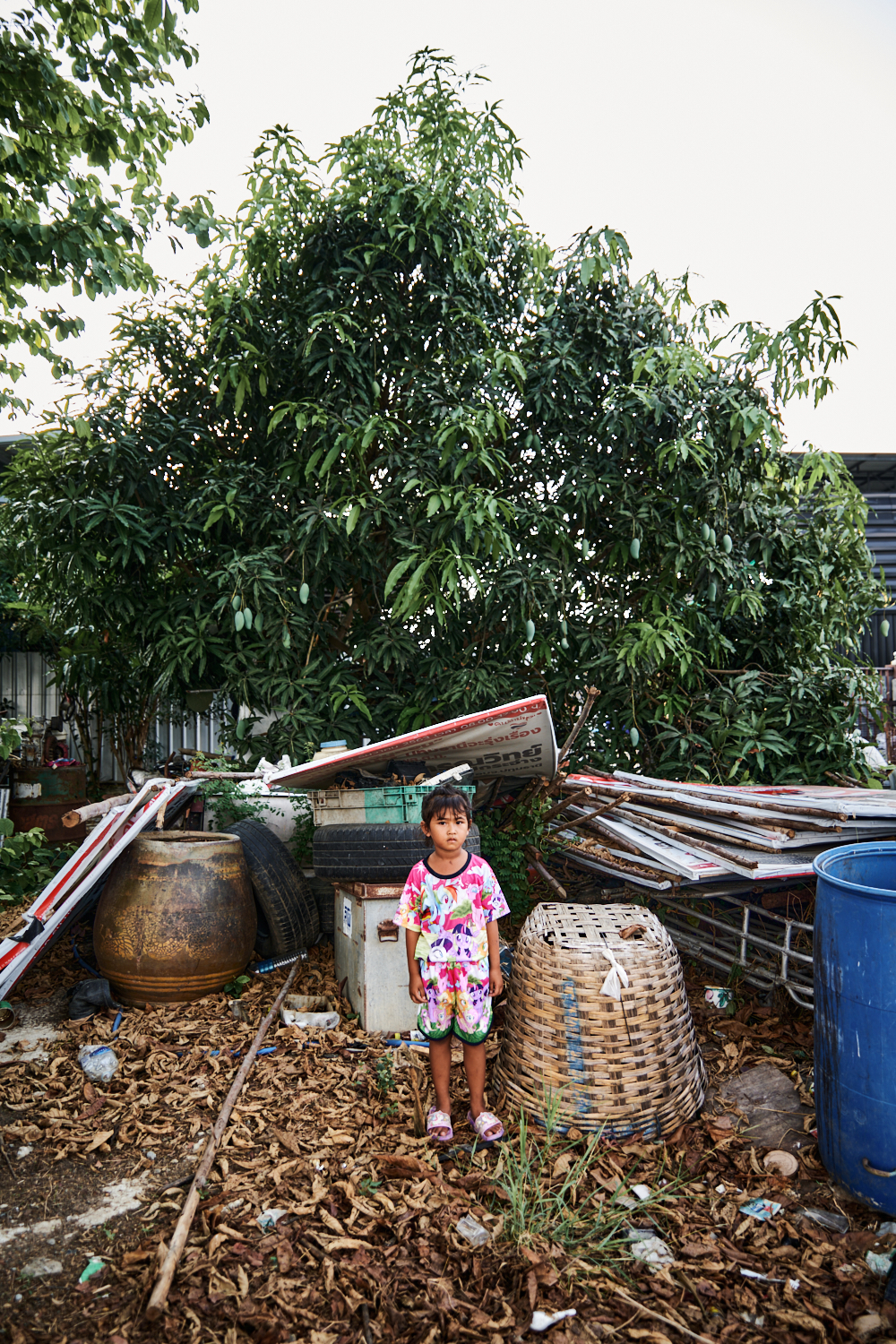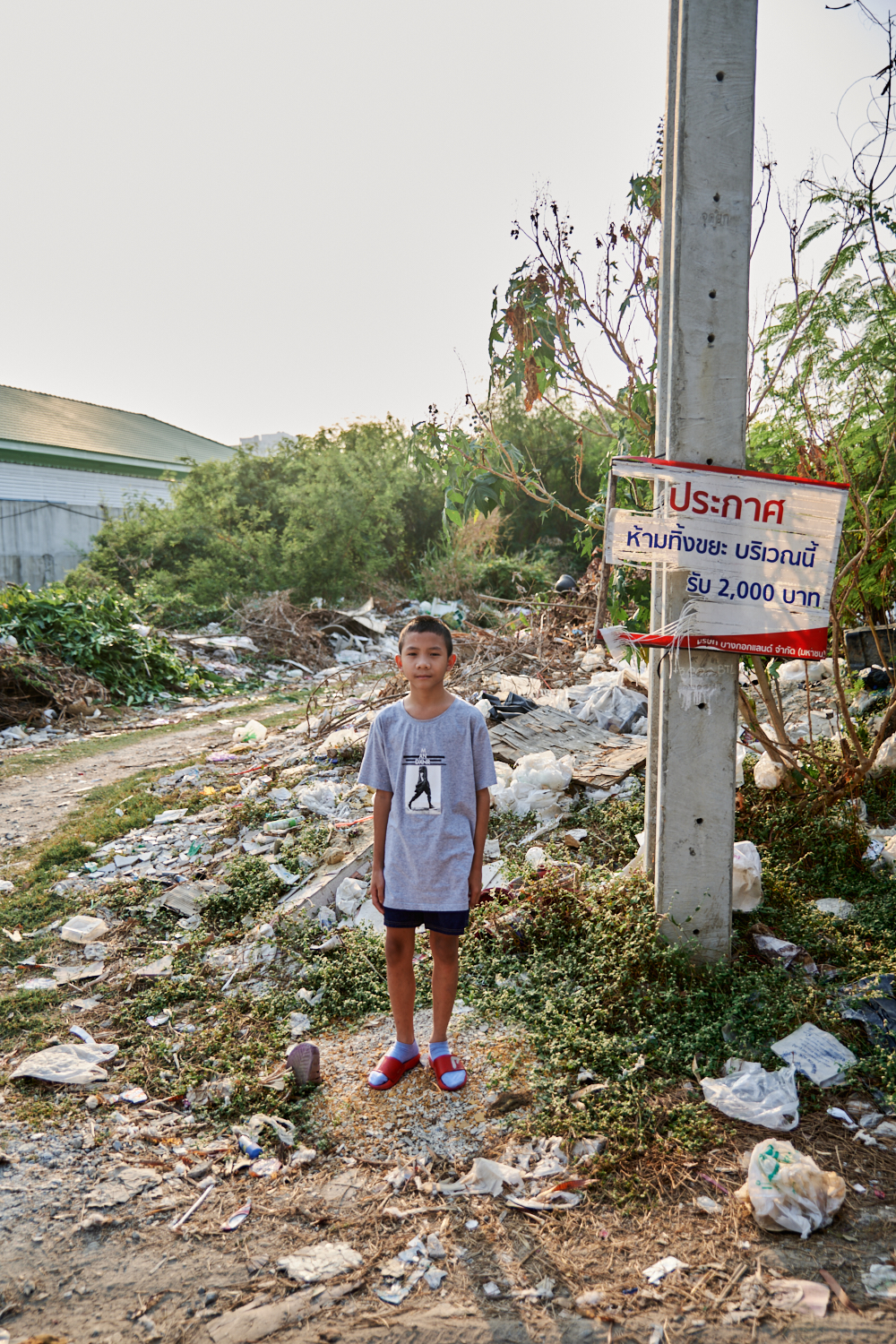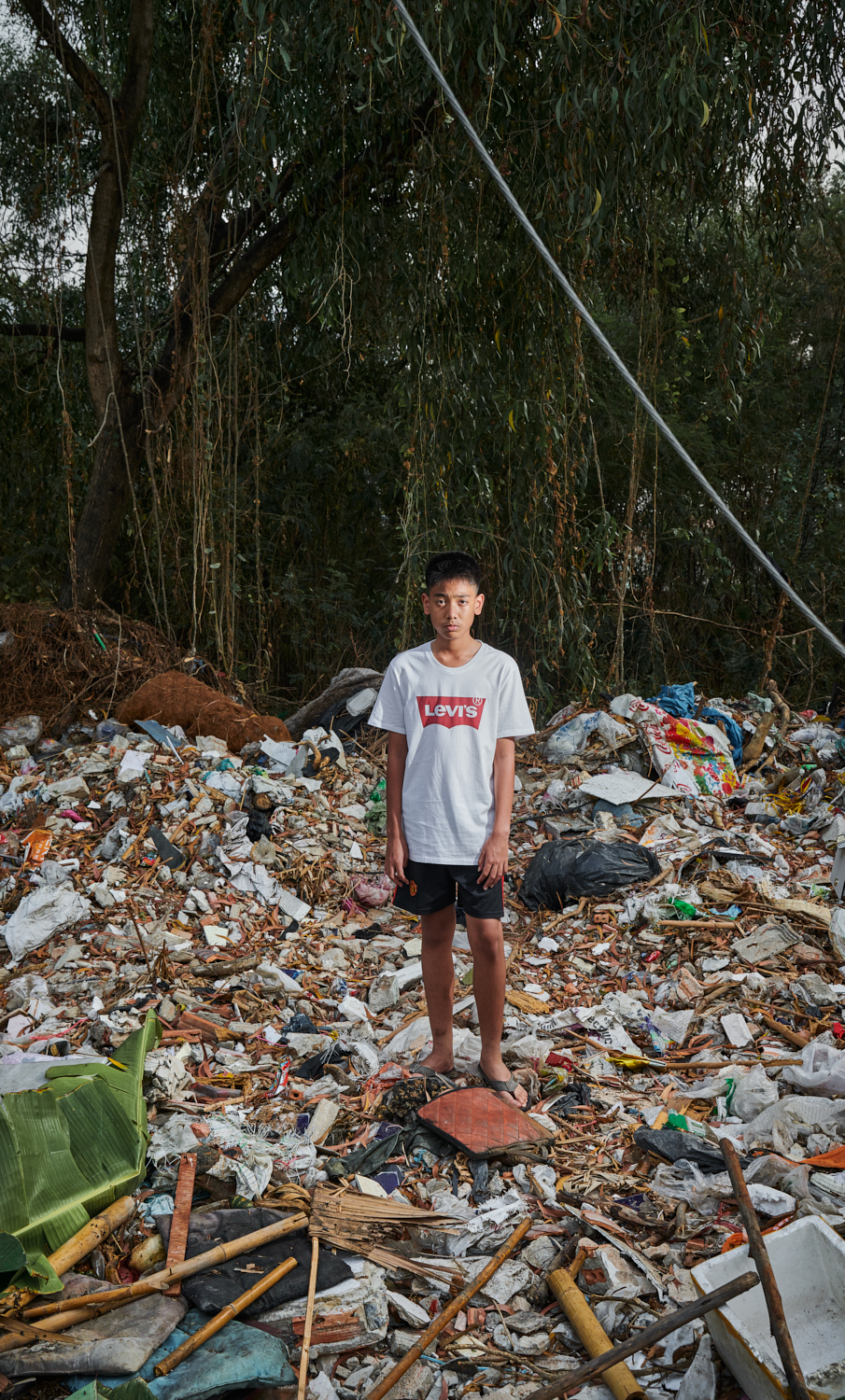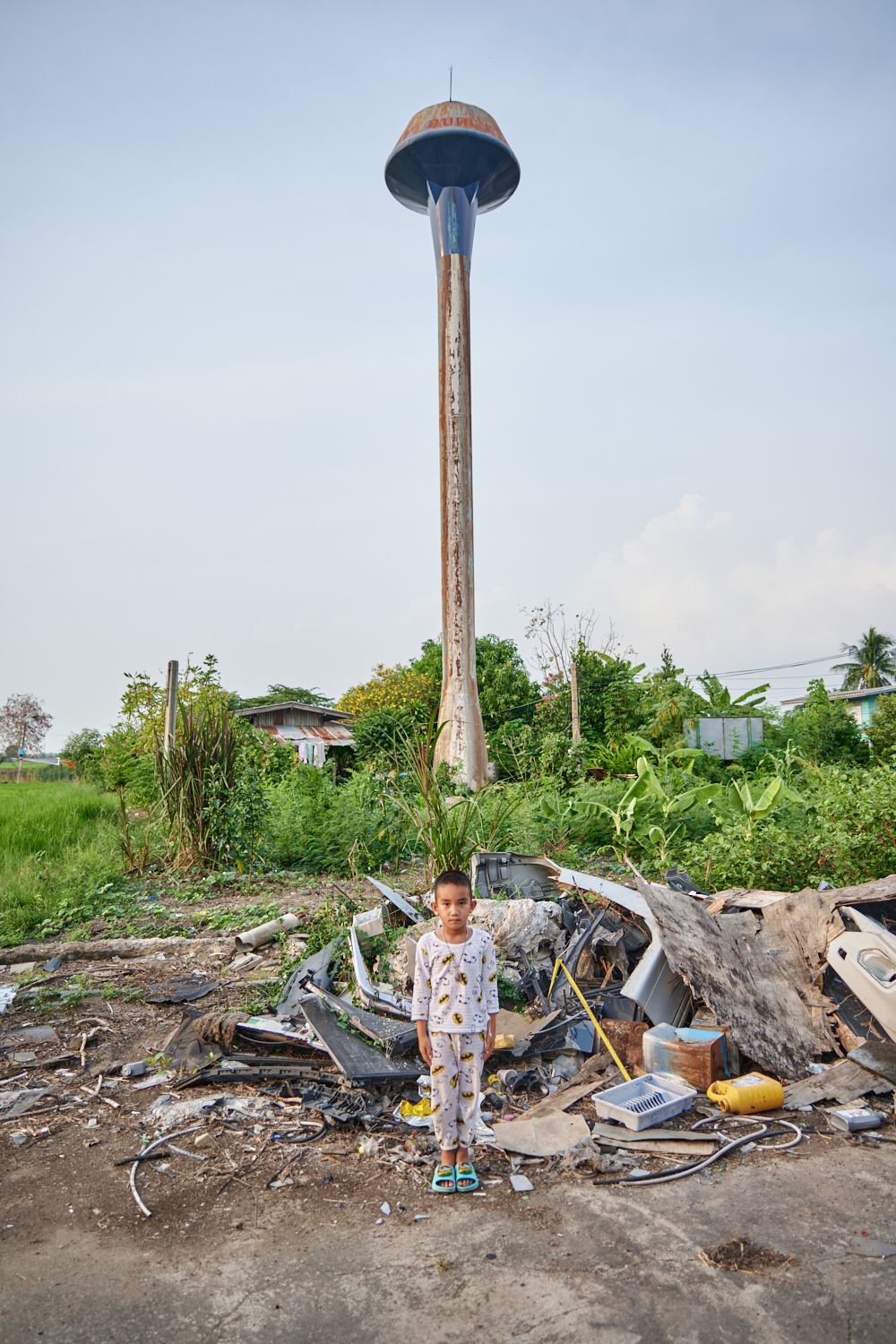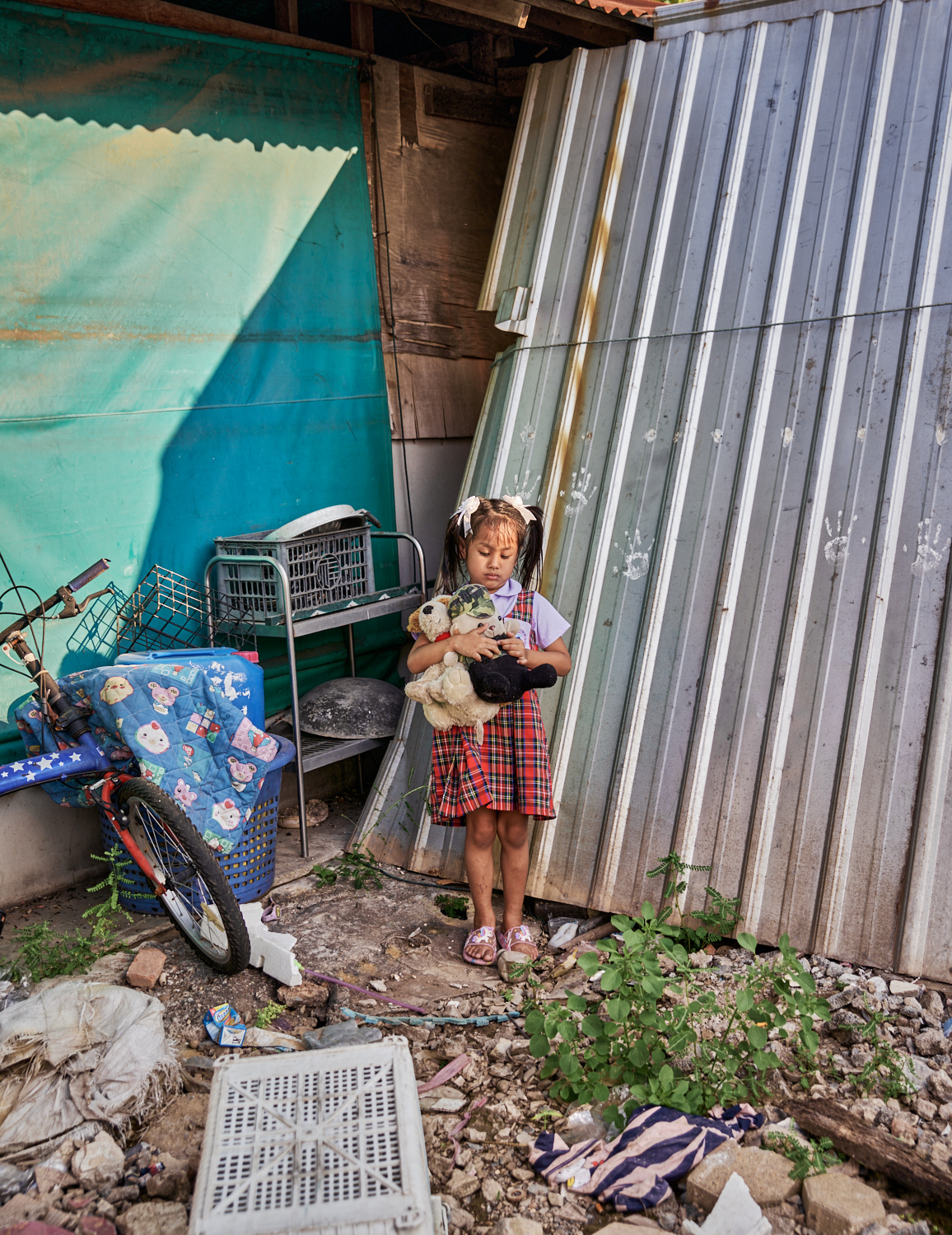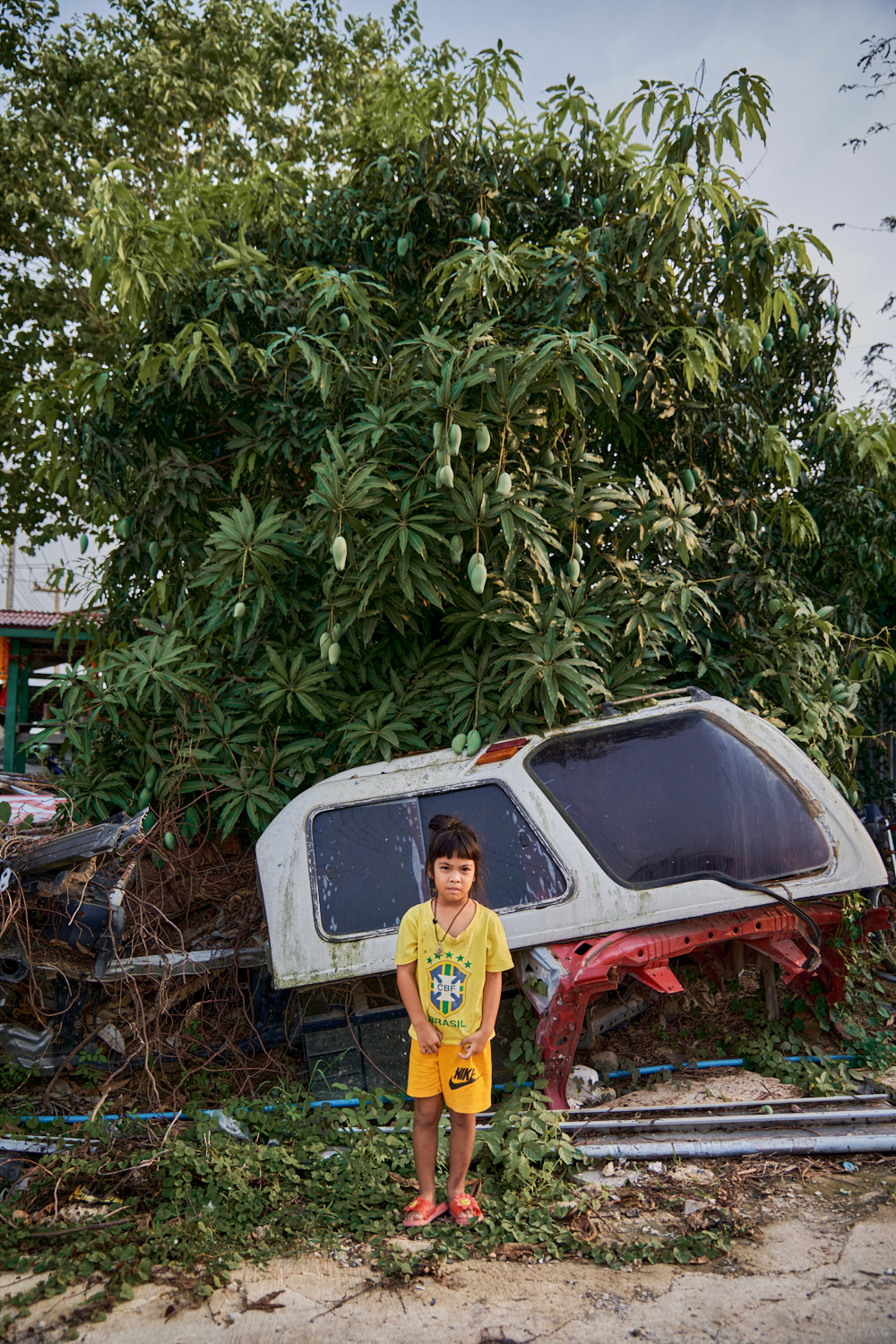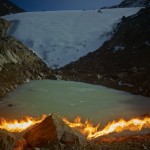Mark Kitsawaeng: Forgotten Space
This week we are looking at the work of artists who submitted projects during our most recent call-for-entries. Today, Mark Kitsawaeng and I discuss Forgotten Space.
Phanuphan (Mark) Kitsawaeng is a photographer from Thailand, currently living in Los Angeles. He graduated with a Bachelor’s Degree in Film from RSU (Rangsit University in Thailand). With a strong background in commercial photography working for Thailand’s largest entertainment company, GMM (Grammy), his images are technically skillful and evocative. After honing his craft in the entertainment world, Mark turned the gaze of his camera towards underrepresented communities to bring forth greater good. “My motivation in photography is to explore the isolated places around South East Asia, and let people know, and see the places through my point of view. Mark used to be a part of the volunteer work with Thailand Healthcare organization: working South East Asia: including Laos, Vietnam, and Thailand. He joined the community for teaching, helping and documenting the people who had not gotten a chance to meet what many would consider a decent standard of living. Mark is a recently graduated an MFA student in Photography at The Photo Arts Conservatory of NYFA (The New York Film Academy). He hopes use his camera to bring forth global awareness and change for the better.
Follow Mark Kitsawaeng on Instagram: @markitsawaeng
Forgotten Space
It has been known that billionaires own most of the world’s wealth; however, In Thailand, the wealth disparity is even more extreme. Credit Suisse Research Institute shows that 91.7% of Thai people have wealth under $10000, and 7.5% in between the $10000-100000 baht. Moreover, The Credit Suisse Global Wealth Databook report shows that 1% of Thai(billionaire) people own more than 67% of the country’s wealth. In another word, there are no other countries in the world where the richest control more than 50% of the country’s wealth. As a resource, it emphasizes that Thailand is one of the most unequal countries in the world. We all are living in a capitalist world where money is one of the most important things. As a result, capitalism has created a society where people are separated in many different levels: including upper, lower, or working classes. Because of the different levels, the upper class looks at the lower lifestyles as ridiculous. However, what the upper class sees as ridiculous, the lower class sees as ordinary. The series Forgotten Space is highlighting the inequality system in Thailand by documenting different kids from working families class who are living in poverty. In fact, they are living next to the wasted areas—the area that is created by capitalism. However, the inequality is not only the difference in their environment, but it is divided by education and the number of opportunities that are available for them. Forgotten Space is a set of photographs of children who were photographed around their homes: including the living rooms, playgrounds, and backyards. In showing the environment that is around them, the viewer sees that which the children have seen is ordinary, but of course, is not at all. Participants in this documentary project were given a free right to decide what they wanted to wear and how to stand in representing their identities. People who are still living in poverty have only very limited access to clean water, clean air, and electricity. However, the best way to reduce inequality in societies is to improve the quality of the social environment, the real quality of life for everyone.
Daniel George: Tell us how Forgotten Space began. What brought Thailand’s wealth disparity to your attention, prompting you to begin working with these people? How about the specific focus on children?
Mark Kitsawaeng: It all began in 2020 when I returned to Bangkok for a vacation. Even though I hadn’t been back in several years, everything seemed strangely familiar. The roads, the trees, and the overall environment appeared unchanged, as if time had stood still. While heading to the mall with my friend, I couldn’t help but notice a group of children playing soccer in the same run-down area that had been there since my childhood. That was the first trigger. The second moment that sparked my curiosity was when I stumbled upon a Facebook post stating that India was the most unequal country in the world. This post piqued my interest, and I found myself wondering, ‘What about Thailand? Where do we stand?’ It turned out that Thailand had once held the top spot but had now slipped to third place.
Believe it or not, in Thailand, we have a Children’s National Day. If you can’t think of anything, it’s pretty similar to Father’s and Mother’s Day in the United States, where kids can receive a lot of promotions and gifts on that day. Every year, the Thai government comes out to emphasize the importance of children, such as their role as the future of the country and their capacity to drive Thailand forward. However, when we look at their reality, it’s a different story. They lack access to clean water and suffer from air pollution. Moreover, their access to education is limited. As a result, that was where I decided to document a Forgotten Space project by documenting photos to highlight the children in poverty areas who are facing with those situations as a powerful way to get people to understand and care about their situation.
DG: Could you talk more about your motivations to document underrepresented communities around Southeast Asia?
MK: It is crucial to recognize that the issue of underrepresented communities is not confined to a single country like Thailand but is a pervasive challenge throughout Southeast Asia. The region is incredibly diverse in terms of cultures, languages, and socio-economic conditions, which means there are countless stories and experiences waiting to be uncovered. My goal is not only to shed light on these issues but also to emphasize that they extend far beyond national borders. Ultimately, my motivation is rooted in the belief that no one deserves to live in a situation where they can’t meet a basic standard of living. It’s a matter of fundamental human rights and social justice. By shining a light on these underrepresented communities and their unique challenges, we can work towards a more equitable and inclusive Southeast Asia. I am committed to supporting this cause and will continue to do so as long as there are stories to tell, voices to amplify, and positive change to be achieved.
DG: I’d also like to hear about your involvement with the Thailand Healthcare organization. How did your documentary work evolve during this period, and in what ways does it continue to inform what you do?
MK: My involvement with the Thailand Healthcare organization was primarily focused on helping and teaching rather than documenting. During my time with the organization, I realized that my role and purpose evolved significantly, and this experience continues to inform my work in various ways.
My initial intention was to contribute by offering my skills and expertise to support the healthcare initiatives and educational programs that the organization was running. This involved tasks such as teaching English, assisting with healthcare services, and providing general support to the local community. I did not initially plan on documenting my experiences through photography or videography yet at that moment.
One of the most profound revelations during my time with the Thailand Healthcare organization was the way it altered my perspective on life and the importance of understanding people’s realities before attempting to document them. I became genuinely curious about the lives of the people I was working with, particularly the children. I wondered whether they saw their environment as a problem or if they were simply accustomed to their circumstances. Surprisingly, I discovered that many of the individuals I encountered were not fully aware of the challenging environment they were surrounded by. As a result, my approach to documentary work shifted. Instead of immediately picking up my camera to capture images, I chose to invest more time in getting to know the community, building trust, and understanding their perspectives. This approach allowed me to develop a deeper connection with the people I was working with and gain valuable insights into their lives.
My experience with the Thailand Healthcare organization reinforced my belief that working alongside organizations and communities can transform images into actions that genuinely improve the lives of those in need. It highlighted the importance of collaboration and the potential for positive change when individuals and organizations come together to address issues and provide support.
DG: With these photographs, you make it clear that it is a process in which you work along with these people. You write about giving these kids “a free right to decide what they wanted to wear and how to stand in representing their identities.” I’m curious, in the end, how do these photographs work for them?
MK: These photographs play a multifaceted role in the lives of the individuals involved, offering various experiences and outcomes for them. For some of the participants, these photographs serve as a means to strengthen their sense of community and belonging. They view it as a fun and inclusive activity that encourages more of their friends to join the project. In certain cases, parents play a pivotal role in encouraging their children to be photographed. Since they don’t see the problem as a problem, the prospect of receiving more likes and comments on social media can be a motivating factor. Parents may see these photos as a way to boost their child’s self-esteem or as an opportunity for their child to gain recognition and validation from a broader audience, so they encourage their kids to be part of the project. For a few, the process can be challenging. Social media often emphasizes looking a certain way for likes. This can lead to a conflict between how they want to be seen and how they feel pressured to appear.
DG: In general, how do you feel that photographs can contribute to the “quality of the social environment” and “the real quality of life for everyone.”?
MK: Photographs have the potential to significantly contribute to the “quality of the social environment” and improve “the real quality of life for everyone.” They do so by shedding light on critical issues such as poverty and environmental problems, making these challenges more relatable and tangible to a wider audience.
In a place like Bangkok, where poverty can be pervasive but often goes unnoticed, photographs serve as a powerful tool to reveal the stark realities that exist even in the heart of the city. These photos capture everyday scenes—children walking home, playing in a local playground, or navigating their surroundings. Through these images, viewers are confronted with the lived experiences of individuals facing adversity.
The primary aim is to present authentic depictions of these situations, not to exploit them but to raise awareness and foster understanding. Pictures have a unique ability to evoke emotions and empathy. When people see individuals and communities grappling with challenges through photographs, it humanizes these issues and makes them more relatable. This, in turn, can lead to increased compassion and support for those in need.
In essence, photographs act as a bridge, connecting individuals from diverse backgrounds to the social and environmental issues that affect people’s lives. By enabling people to better comprehend the challenges faced by others, photographs can inspire positive action, encourage community engagement, and ultimately contribute to an improved social environment and a higher quality of life for everyone.
Posts on Lenscratch may not be reproduced without the permission of the Lenscratch staff and the photographer.
Recommended
-
Earth Week: Simon Norfolk: When I am Laid in EarthApril 27th, 2024
-
Shinichiro Nagasawa: The Bonin IslandersApril 2nd, 2024
-
The International Women in Photo Association Awards: Lorraine Turci: The Resilience of the CrowMarch 16th, 2024
-
The International Women in Photo Association Awards: Rayito Flores Pelcastre: Chirping of CricketsMarch 14th, 2024
-
The International Women in Photo Association Awards: Louise Amelie: What Does Migration Mean for those who Stay BehindMarch 12th, 2024

